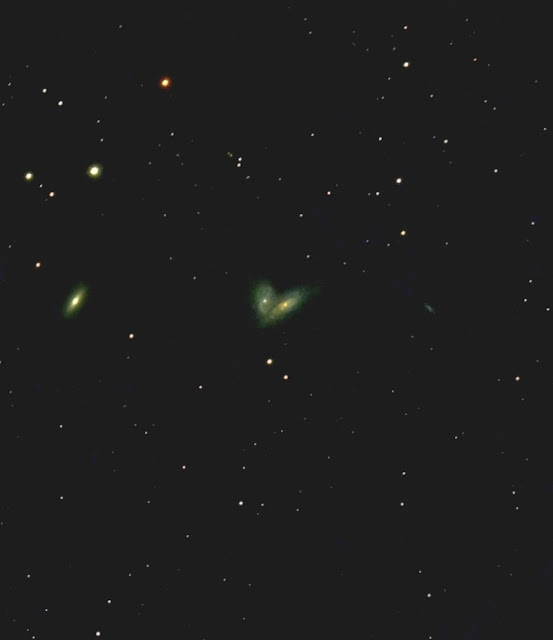The Siamese Twins Galaxies (NGC 4567 and NGC 4568) are merging
galaxies with a band of strong star formation where they overlap. They are a difficult
target for the RASA 8/Mallincam DS10C combination because they have a very
small angular diameter in the scope’s FOV.
The astrometric images show a number of interesting galaxies and other
objects.
I decided that these objects provided an opportunity to
examine the effects of increasing exposure times on the quality of an image
under Bortle 8/9 skies. Unfortunately, cloudy weather prevented me from completing
a full series of images, and by the time skies cleared, the imaged field was
behind the roofline of the house by the time skies became dark enough to image.
The imaging system was: RASA 8, DS10C, Optolong L-Pro
filter. Imaging time was 7 seconds per integration at NINA Gain 1000. No binning. Short integration times with zero to low gain are essential under bright skies. Longer integrations than 7 seconds result in the histogram peak moving off the graph to the right. The
3 image sets I managed to capture had total integration times of 12 minutes, 42
minutes, and 102 minutes. The comparisons below show differences in selected,
heavily cropped objects in the frame at different integration times. All images
were captured in NINA, and processed identically in Siril, with noise reduction in Topaz and background
extraction in Astroflat.
 |
| NGC 4567/8 12 min |
 |
| NGC 4567/8 42 min |
 |
| NGC 4567/8 102 min |
The images show improvement in color saturation and balance, as well as fine detail in the galaxies (limited by the resolution). The difference between the 42 minute integration and the 102 minute integration is surprisingly small.
The differences for M 58, also in the field, are more apparent.
 |
| M 58 12 min |








No comments:
Post a Comment